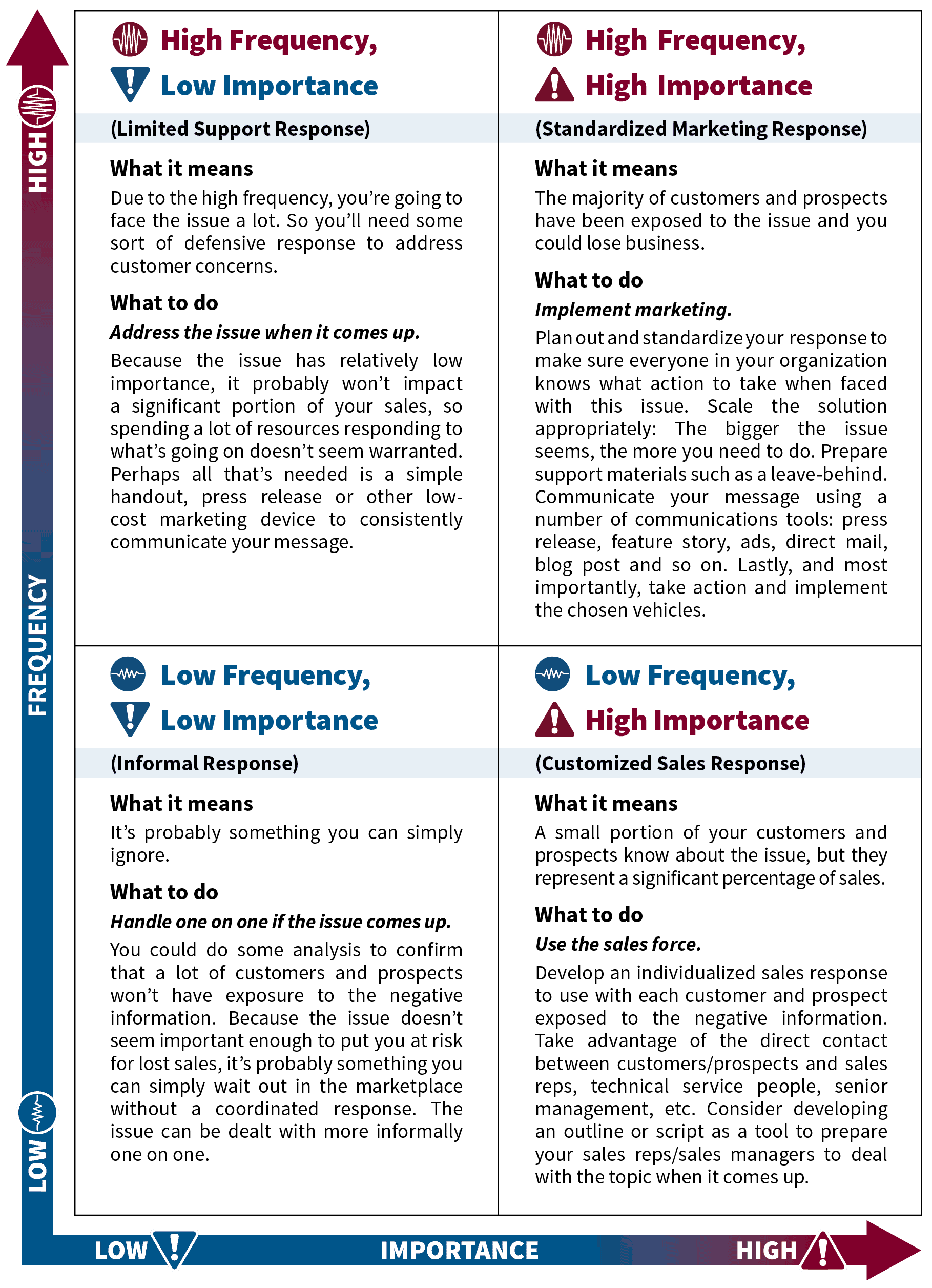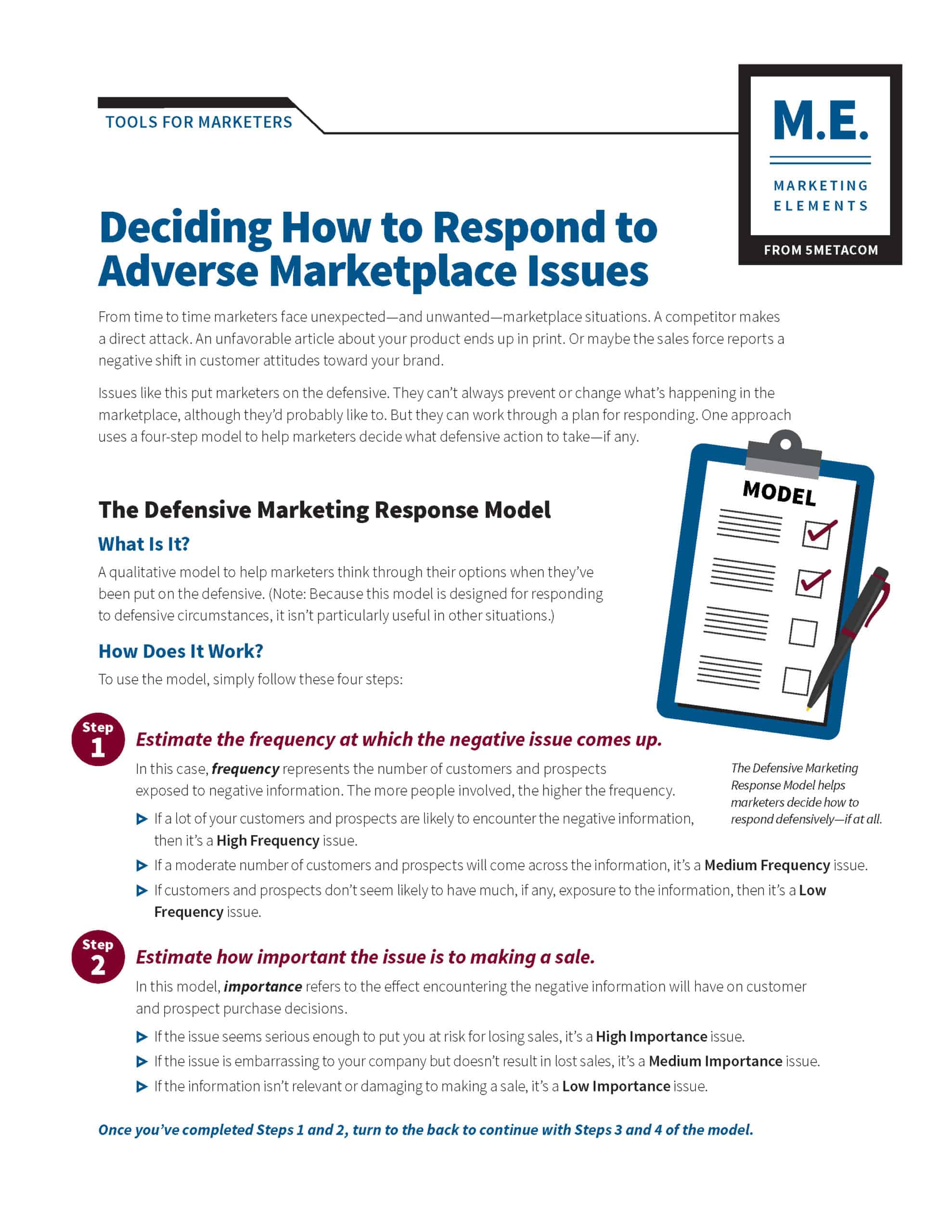Deciding How to Respond to Adverse Marketplace Issues
From time to time marketers face unexpected — and unwanted — marketplace situations. A competitor makes a direct attack. An unfavorable article about your product ends up in print. Or maybe the sales force reports a negative shift in customer attitudes toward your brand.
Issues like this put marketers on the defensive. They can’t always prevent or change what’s happening in the marketplace, although they’d probably like to. But they can work through a plan for responding. One approach uses a four-step model to help marketers decide what defensive action to take — if any.
The Defensive Marketing Response Model
What Is It?
A qualitative model to help marketers think through their options when they’ve been put on the defensive. (Note: Because this model is designed for responding to defensive circumstances, it isn’t particularly useful in other situations.)
How Does It Work?
To use the model, simply follow these four steps:

The Defensive Marketing Response Model helps marketers decide how to respond defensively — if at all.

Estimate the frequency at which the negative issue comes up.
In this case, frequency represents the number of customers and prospects exposed to negative information. The more people involved, the higher the frequency.
- If a lot of your customers and prospects are likely to encounter the negative information, then it’s a High Frequency issue.
- If a moderate number of customers and prospects will come across the information, it’s a Medium Frequency issue.
- If customers and prospects don’t seem likely to have much, if any, exposure to the information, then it’s a Low Frequency issue.

Estimate how important the issue is to making a sale.
In this model, importance refers to the effect encountering the negative information will have on customer and prospect purchase decisions.
- If the issue seems serious enough to put you at risk for losing sales, it’s a High Importance issue.
- If the issue is embarrassing to your company but doesn’t result in lost sales, it’s a Medium Importance issue.
- If the information isn’t relevant or damaging to making a sale, it’s a Low Importance issue.
Putting the Defensive Marketing Response Model into Action

Identify where your situation falls on the grid.
- Now that you know the frequency and importance, find the quadrant below that most closely corresponds to your situation.

Take action.
- Consider/implement the recommended defensive activities as described below.
Defensive Marketing Response Model Grid
Based on the estimated frequency and importance, find the quadrant below that most closely corresponds to your situation.

A Big-Picture Look at Defensive Marketing
With defensive marketing, it’s tempting to look at each situation that comes up as a single event, but that doesn’t always give you a clear picture of what’s happening in the marketplace. Why? A single issue could seem unimportant, but a series of comparatively smaller issues taking place in a short period of time can build into something serious. When planning a defensive marketing response, take into account the combined impact of the issues you’re facing.
What It Means To You
As an experienced marketer, responding defensively probably seems somewhat intuitive. You don’t really need a grid to help you decide what to do, but others within your organization (sales reps, management, etc.) may not feel as comfortable about how to respond to adverse marketplace situations. The Defensive Marketing Response Model could help them better understand your recommendations.
